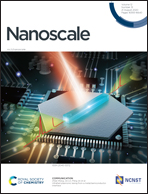A sulfur, nitrogen dual-doped porous graphene nanohybrid for ultraselective Hg(ii) separation over Pb(ii) and Cu(ii)†
Abstract
Two-dimensional (2D) porous graphene is attractive as a high-permeability membrane for ionic and molecular separation. Here, we propose a sulfur, nitrogen dual-doped 2D porous graphene (SNPG) nanohybrid by adopting a facile one-step process. The resulting sandwich-like porous nanohybrid features uniform ion-gated nanopores for efficient transport of target heavy metal ions while blocking undesired ions, as well as abundant multi-binding ligands for selectively chelating permeated heavy metal ions. We show from systematic experiments that this SNPG nanohybrid exhibits outstanding selectivity and ability to separate Hg(II) ions in mixtures with eight other metal ions. An excellent uptake capability (803 mg g−1) and high removal ability (>99%) within the entire pH range of 2–10 can be obtained. Given the specific 2D porous nanostructure and specific binding ligands, SNPG exhibits an ultrahigh separation factor towards Hg(II) that is up to four orders of magnitude higher than those of Pb(II), Cd(II) and Cu(II) ions, significantly higher than those of most reported adsorbents. These findings provide a new opportunity to develop selective materials and devices for applications such as efficient recognition, extraction and separation of target metal ions in complex aqueous environments.



 Please wait while we load your content...
Please wait while we load your content...